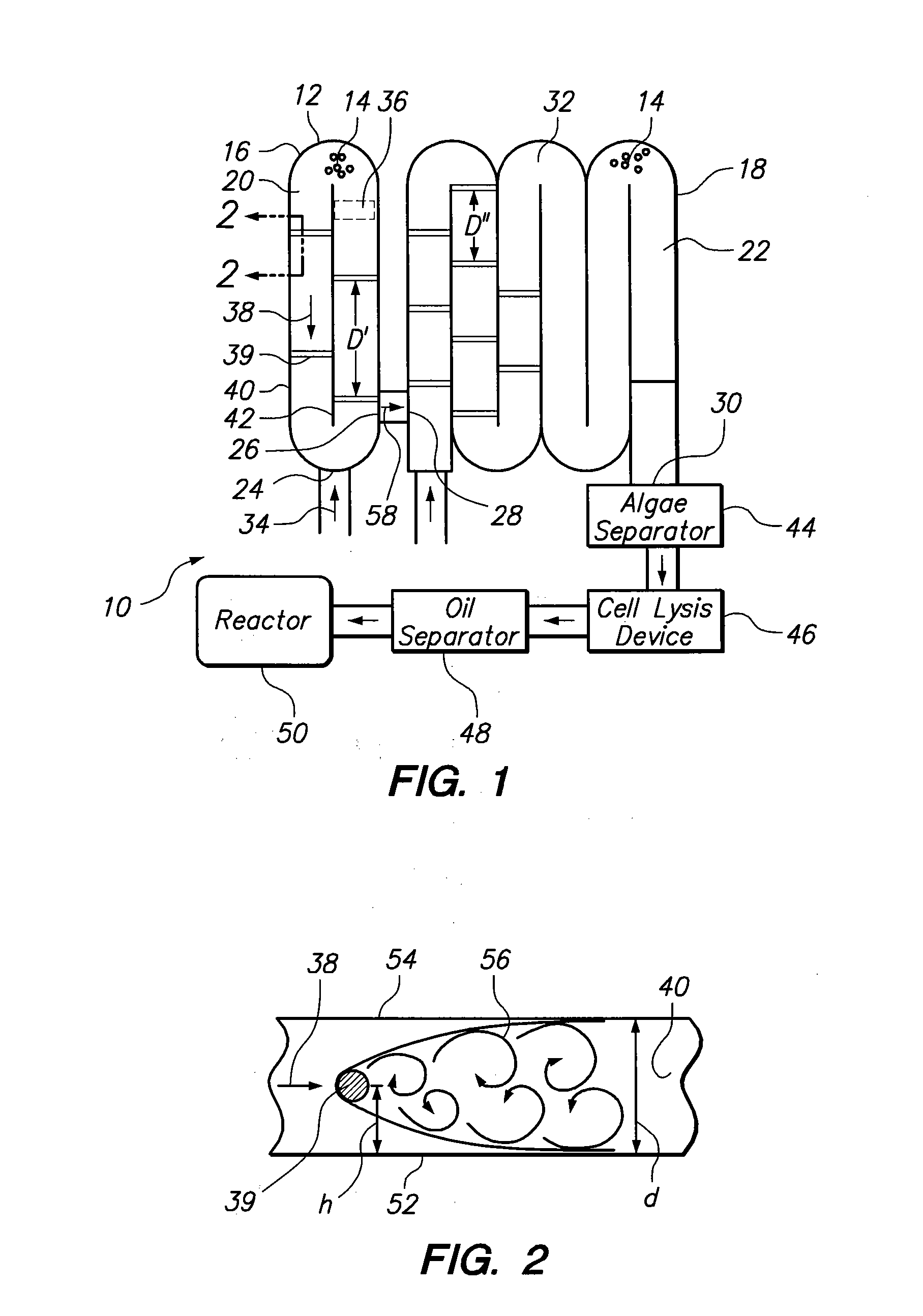High photoefficiency microalgae bioreactors
a bioreactor and microalgae technology, applied in bioreactors/fermenters, microorganisms, after-treatment of biomass, etc., can solve the problems of increasing the cost of hydrocarbon products, the process involved in creating biofuel from plant oils is expensive, and the large-scale algae harvest operation does not optimize the photoefficiency of algae in a cost-effective manner
- Summary
- Abstract
- Description
- Claims
- Application Information
AI Technical Summary
Benefits of technology
Problems solved by technology
Method used
Image
Examples
Embodiment Construction
[0013]Referring initially to FIG. 1, a system for producing algae with improved photoefficiency is shown and generally designated 10. As shown, the system 10 includes a bioreactor 12 for growing algae cells (exemplary cells depicted at 14). Further, the bioreactor 12 is formed from a first stage reactor 16 and a second stage reactor 18. Preferably, the first stage reactor 16 is an open raceway chemostat and the second stage reactor 18 is an open raceway plug flow reactor. Each stage's reactor 16, 18 includes a conduit section 20, 22, respectively. As shown, the conduit section 20 includes an input port 24 and an output port 26. Also, the conduit section 22 includes an input port 28 and an output port 30. For purposes of the present invention, the output port 26 of the first stage reactor 16 and the input port 28 of the second stage reactor 18 are in fluid communication to create a conduit 32.
[0014]As further shown in FIG. 1, in the system 10, a medium (indicated by arrow 34) is rece...
PUM
 Login to View More
Login to View More Abstract
Description
Claims
Application Information
 Login to View More
Login to View More - R&D
- Intellectual Property
- Life Sciences
- Materials
- Tech Scout
- Unparalleled Data Quality
- Higher Quality Content
- 60% Fewer Hallucinations
Browse by: Latest US Patents, China's latest patents, Technical Efficacy Thesaurus, Application Domain, Technology Topic, Popular Technical Reports.
© 2025 PatSnap. All rights reserved.Legal|Privacy policy|Modern Slavery Act Transparency Statement|Sitemap|About US| Contact US: help@patsnap.com


